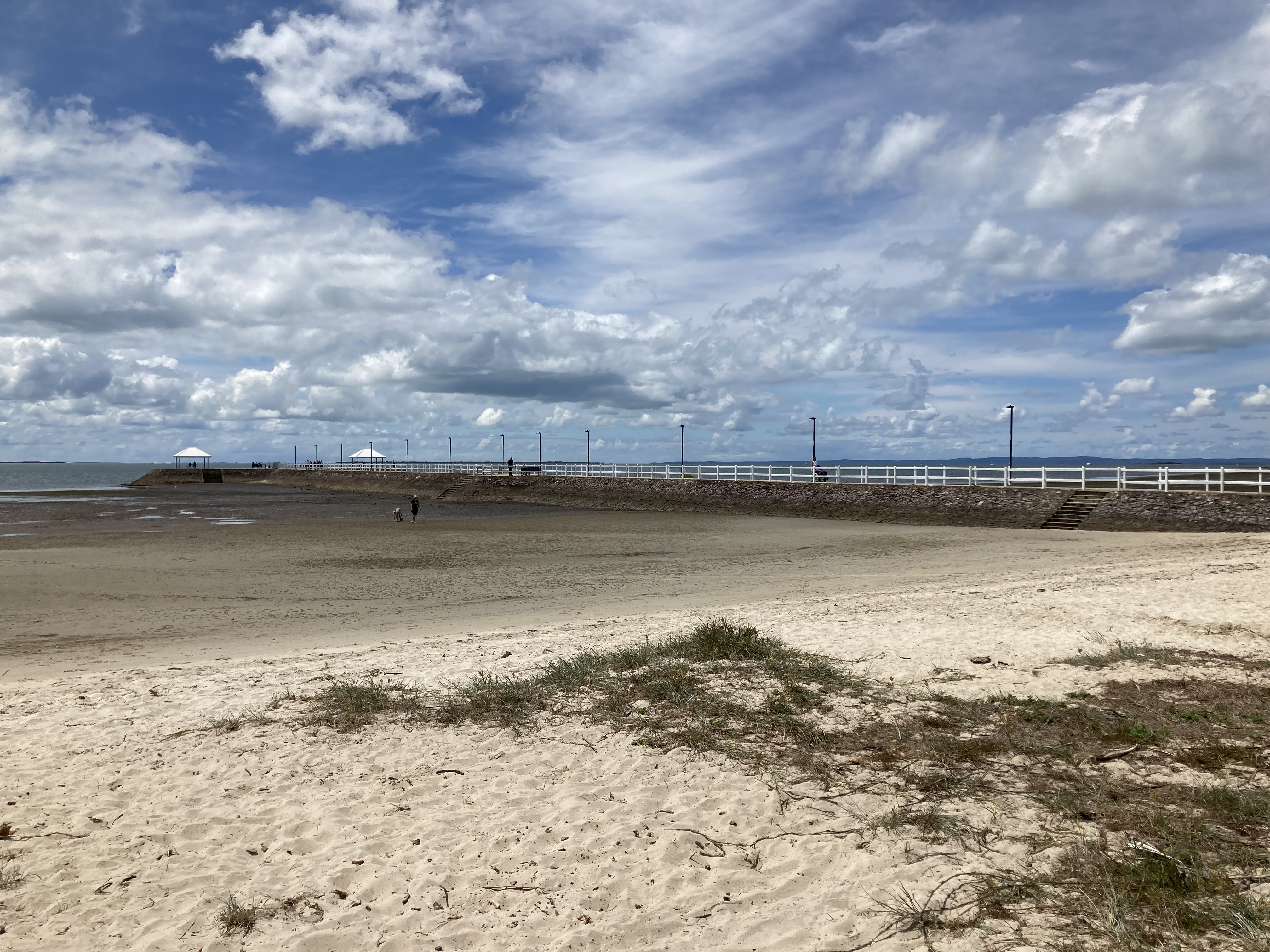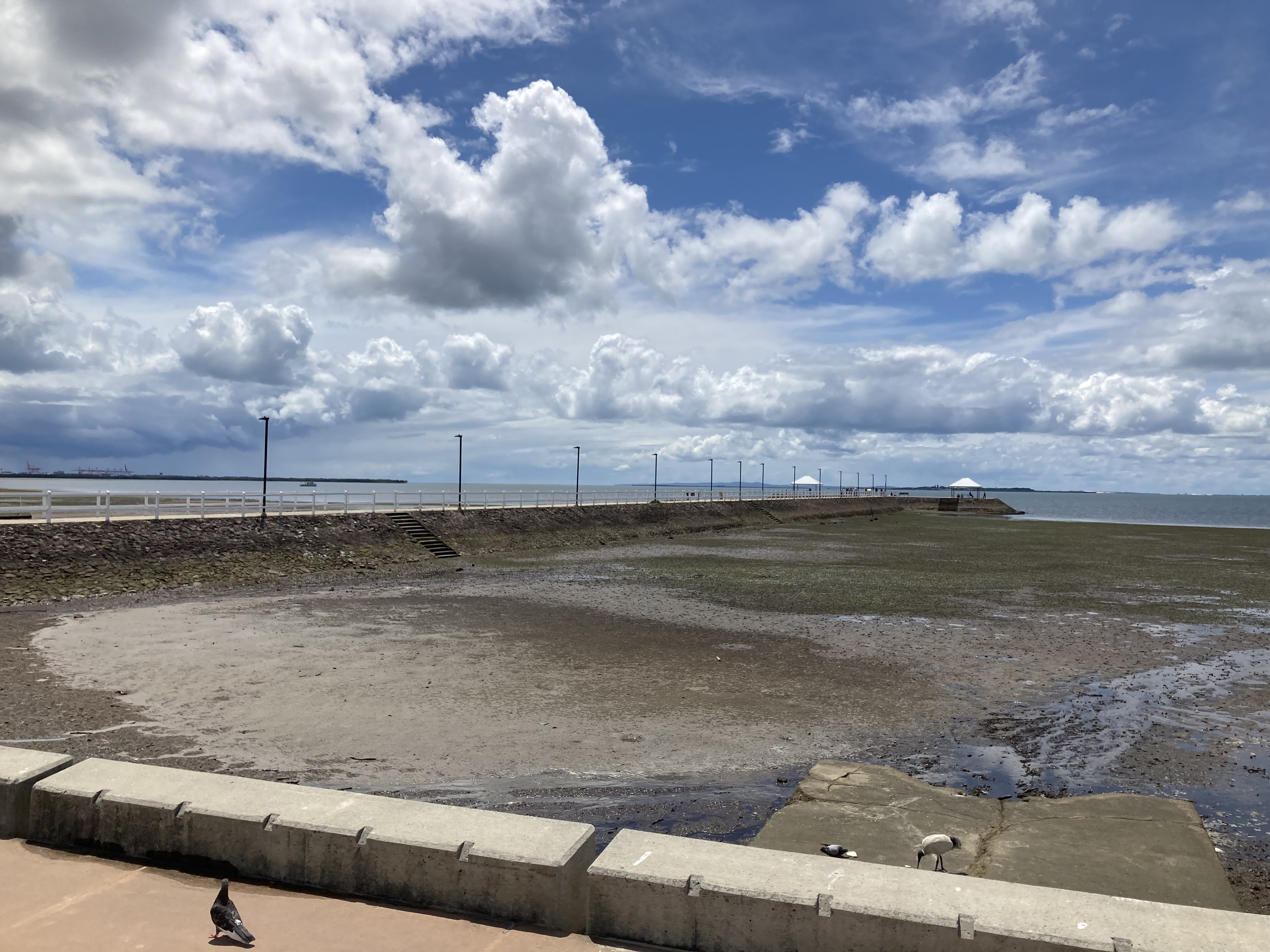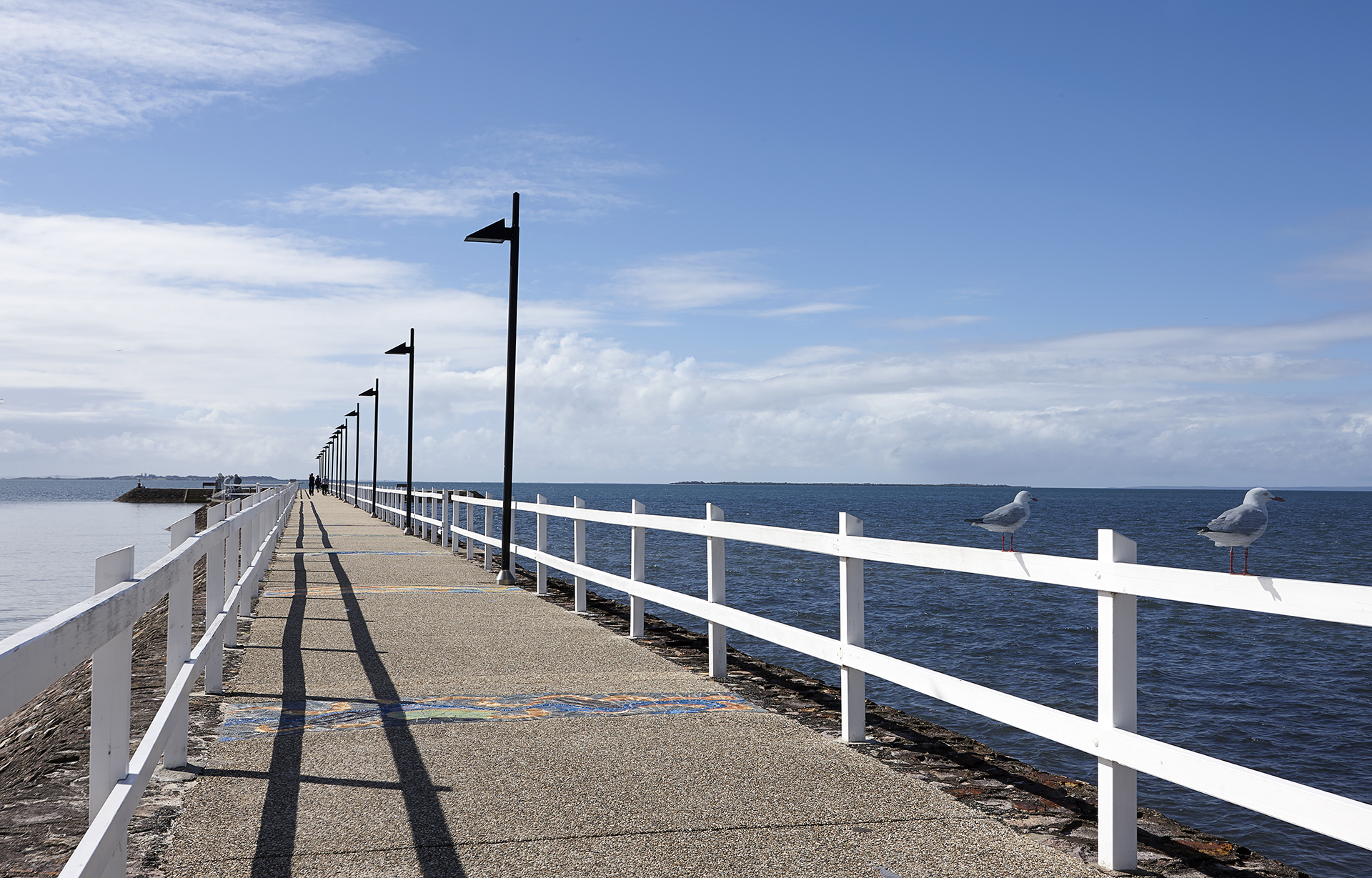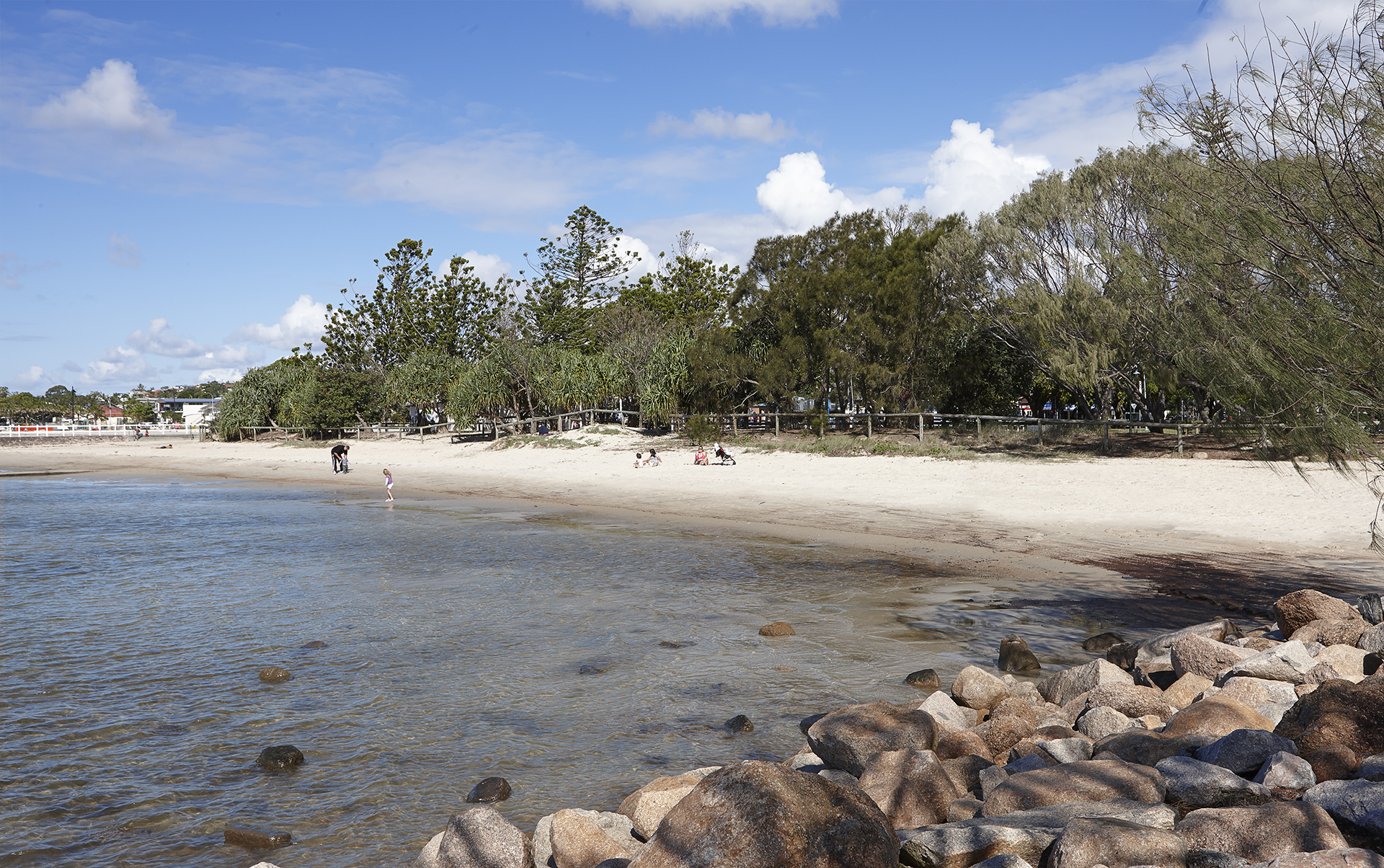Address summary
Wynnum/Manly/Lota Foreshores - plus areas or parkland in road reserves & between road and sea
Addresses
- Along Esplanade , Lota, Queensland 4179;
- Along The esplanade , Manly, Queensland 4179;
- Along Waterloo Esplanade, Wynnum, Queensland 4178;
- Along Wynnum north Esplanade, Wynnum, Queensland 4178;
- Along Royal Esplanade, Manly, Queensland 4179
Type of place
Park, Reserve
Period
Federation 1890-1914
Address summary
Wynnum/Manly/Lota Foreshores - plus areas or parkland in road reserves & between road and sea
Addresses
- Along Esplanade , Lota, Queensland 4179;
- Along The esplanade , Manly, Queensland 4179;
- Along Waterloo Esplanade, Wynnum, Queensland 4178;
- Along Wynnum north Esplanade, Wynnum, Queensland 4178;
- Along Royal Esplanade, Manly, Queensland 4179
Type of place
Park, Reserve
Period
Federation 1890-1914
The Wynnum/Manly/Lota Foreshores is part of the Bayside Parklands which is a 16 kilometre green ribbon of connected parks on Brisbane’s south western edge of Moreton Bay.
The parklands stretch from Whyte Island in the north, fringe the Wynnum/Manly/Lota Foreshores and include bushlands around Tingalpa and Lota Creeks in the south.
These parklands conserve the remaining tidal wetland and bushland habitats in the area and shelter many wild life species. The foreshore parks overlook the tidal flats of Moreton Bay Marine Park, an important feeding and resting ground for migratory wading birds.
The Wynnum/Manly/Lota Foreshores extends from the mangrove edge of Elanora Park in Wynnum, south to the tidal mangrove swamp at the mouth of Lota Creek. Notable features along the foreshore include Elanora Park, Oyster Point, Greene Park, Pandanus Beach, Wynnum Jetty, Wynnum Wading Pool, Darling Point, Manly Beach, Norfolk Point, Manly Boat Harbour and Fig Tree Point. A ribbon of small parks runs along most of the length of the foreshore interrupted only by the Manly Boat Harbour.
Expansive views of Moreton Bay and its islands are afforded from most locations along the foreshore. Views extend from the Port of Brisbane at Fisherman’s Island, around to St Helena Island, the sandhills of Moreton Island, to Green Island and Stradbroke Island. The Wynnum/Manly/Lota Foreshores is popular for picnics and promenading, walking, cycling, fishing, boating, informal sports and games, swimming, windsurfing and birdwatching.
Elanora Park accommodates facilities and a large area of sporting fields for a number of sporting groups including Wynnum Rugby Union and the Wynnum Manly Bowls Club. The Wynnum Rugby fields are distinguished by a prominent timber clubhouse which was relocated from the Lytton Quarantine Station. A mangrove circuit boardwalk commences in Elanora Park and extends north through the mangrove swamp fringing the Park
A thin open grassed park clings to the foreshore between Elanora Park and the mouth of Wynnum Creek. The parkland north of the creek is distinguished by exuberant Moreton Bay Fig Trees. A concrete and stone slipway stands just north of the creek mouth and breakwater groins extend east to the north and south of the creek mouth. The Wynnum Fish Depot is accommodated just within the creek entrance and boats, including the Wynnum fishing fleet, are moored along the creek edges. Greene Park lies on the north bank of Wynnum Creek and is bounded by Fox Street,
Wynnum Creek and Moreton Bay and accommodates picnic tables and shade trees. Further south at the commencement of Wynnum Esplanade the Wynnum Jetty is a notable feature. A stone sea-wall supporting a fenced walkway, the jetty has allowed the flats to be reclaimed and a sandy beach, Pandanus Beach, has been formed to the north of the jetty with sand imported from Stradbroke Island. A tidal wading pool, Wynnum Wading Pool, stands within the park to the south of Wynnum Jetty.
The pool fills at high tide and seawater is retained by closing valves along the sea-wall.
A large sandstone monument accommodating three drinking fountains stands west of the Jetty. The monument is a memorial to W.H. Barnes, M.L.A., a former State Treasurer who represented the Bulimba and Wynnum electorates from 1901 to 1933.
Darling Point protects the small bay formed by the north breakwater of Manly Boat Harbour and affords views across Moreton Bay.
West of Darling Point, a finger of parkland is trapped between Lower and Upper Esplanade and accommodates a bandstand, picnic tables and shelters, BBQ facilities and a toilet block.
Manly Boat Harbour, the largest small-craft harbour in Queensland, was formed by reclamation activities and has developed into a safe harbour for boats. The Harbour accommodates marinas, docks and facilities for a number of clubs and organisations including the Royal Queensland Yacht Squadron, Wynnum Manly Yacht Club and the Coast Guard. The eastern point of the northern wave break of Manly Boat Harbour is known as Norfolk Point.
The foreshore from the mouth of Lota Creek to Manly Boat Harbour accommodates grassed open parkland with picnic tables, BBQ equipment and play areas. Fig Tree Point projects into Moreton Bay north of the mouth of Lota Creek and features a small elevated timber lookout platform affording extensive views across Moreton Bay. A concrete path commences north of the lookout at Fig Tree Point and continues along the foreshore edge diverting to follow the footpath west of Manly Boat Harbour and connecting back with the foreshore path beyond the Harbour and continuing north along the foreshore edge to Elanora Park.
A concrete slipway and a set of stone stairs immediately north of the creek mouth allows boat and pedestrian access to edge of the foreshore.
The mouth of Lota Creek accommodates areas of extensive mangrove swamps. Fragile narrow timber jetties jut out into the swamp from the north grassed edge of the creek. Mangrove swamp lines the foreshore north from the mouth of Lota Creek stopping a short distance south of the Manly Boat Harbour.
A number of concrete and stone groins of varying lengths and widths extend out into the flats along the length of the foreshore. A low stone retaining wall runs along most of the foreshore edge. The Manly Boat Harbour is sheltered to the south by breakwaters edged with a battered bank of loose rough hewn stones.
Lot plan
Key dates
Local Heritage Place Since —
Date of Citation —
Criterion for listing
(A) Historical; (D) Representative; (E) Aesthetic; (G) SocialInteractive mapping
Lot plan
Key dates
Local Heritage Place Since —
Date of Citation —
Criterion for listing
(A) Historical; (D) Representative; (E) Aesthetic; (G) SocialInteractive mapping
History
In 1933 a souvenir booklet for Wynnum observed,
There is an irresistible appeal about the Wynnum district to the holiday-maker and tourist. Its healthy climate, proximity to Brisbane and splendid transport services are a few among the many advantages which the district enjoys.To these may be added the invigorating sea breezes, magnificent views of Moreton Bay, whose islands stand out like rare jewels in a rich setting, and the everyday work of country life, carried on in many instances in full view of the glistening waves as they break on the grey sands of the beaches. (Back to Wynnum)
The first European record of the Wynnum/Manly/Lota Foreshores and the Moreton Bay area occurred in 1770 when Captain James Cook named Moreton Bay and several features on the outer islands of the Bay, but sailed to the east thinking they were part of the mainland. In 1799, Matthew Flinders sailed inside the islands to the inner Bay but failed to notice the mouth of the Brisbane River.
From 1824 to 1839, the settlement at Moreton Bay was a penal colony and no free settlement was allowed. In 1842 this restriction was lifted and free settlement of the area began. In 1859 the area was surveyed by James Warner whose survey map of Wynnum shows the coast as composed of “mud and mangroves, covered at high tide”. The shoreline of the Bay has been considerably altered since European settlement of the area.
The first land sales in the area took place in 1860 at Lytton and around Waterloo Bay. Most of the initial settlement was concentrated in the Wynnum North region. Grazing, viticulture, farming and fishing were the primary occupations for these early settlers in the Wynnum/Manly/Lota area. In 1882, the first subdivision in the area took place at Manly Beach Estate and the first subdivision in Wynnum was the East Wynnum Estate in 1884. The area soon became popular with holiday makers and holiday homes were constructed along the Bay.
When land was subdivided in Lota the land along the foreshore was reserved for the esplanade. Farms and vineyards dominated the Lota area, supporting a range of crops and sugar, orchards and grazing. Closer settlement of the area began in the 1890s and by 1920s most of Lota had been developed. It has remained primarily a residential area but was a popular holiday spot in the 19th and 20th centuries. Until 1973, people could camp at the lower end of the Esplanade.
The arrival of the railway line to Cleveland in 1889 further boosted the popularity of the Wynnum/Manly/Lota area, particularly as a seaside resort. The many guesthouses and camping sites along with the provision of safe bathing areas and fishing and picnic spots were marked features of the Wynnum/Manly/Lota Foreshores. The Bay was well sheltered and favourable to boating activities.
Farming and fishing remained the primary occupations for residents of the area. Oyster leases were established along the foreshore and creeks. A flourishing fishing industry was partially responsible for the growth of Wynnum and the fishing fleet operating out of Wynnum Creek was the second largest in Queensland. In the 1930s the fleet consisted of 28 licensed fishing boats, employed 108 men, and landed some 2,000 tonnes of fish annually at the Wynnum Fish Depot. The Wynnum fishing fleet, based in Wynnum Creek, has along association with the area although its size has declined in recent years.
The boat slip at Lota Creek is thought to be the first slip built to service Lota House. Constructed in the late 19th century, the present slip is an upgrade of this earlier one. Lota House (1863) was the residence of William Duckett White whose property of 300 acres extended from the Lota foreshore to Manly Road. Lota House is now the Edward Marsden Tooth Memorial Home for the Aged and the oldest surviving house in the Bayside area. White grew sugar cane, grapes and ransome cattle. He is said to have patrolled the cliffs above the beach to prevent day trippers stealing oysters.
Endeavouring to continue to attract holiday makers and residents to the area, much attention was paid by the local authority to increasing the amenity of the foreshore area. Clearing of timber along the foreshore (where the esplanade parks are today) began in 1890 and bathing boxes were erected in the area of the present Manly Baths. The planting of shade trees along the Esplanade commenced in 1895.
The development of facilities included the establishment of the fish markets at Wynnum Creek and the construction of slips and moorings for boating and fishing. Public baths were constructed at Manly. A public bathing enclosure was constructed alongside Jetty No.1 at Wynnum Creek in 1891. In an effort to fund the improvements to the foreshore, in 1909 the Wynnum Council struck a special “Esplanade Improvement Rate” of a penny in the pound on all properties in the Shire. In 1913 the sea wall between Jetty No.2 and Darling Point was constructed. In 1915 a pavilion and kiosk were added to the Manly Jetty. The foreshore became known for their saltwater baths, play and picnic areas, shade trees and open grassed spaces.
By the late 1920s access to the area was possible by rail, bus or road, further increasing its popularity as a resort and also as a place of residence for commuters working in Brisbane.
During William Jolly’s term as Lord Mayor of Brisbane (1925- 1931), priority was given to the construction of a durable arterial road system, the acquisition of more of Brisbane’s scenic viewpoints for public use and purchase and improvement of public parks. Prompt attention was given to the improvement of the foreshores at Sandgate, Wynnum and Manly with a view to increasing their attraction as seaside resorts. Plans were formed to reclaim portions of the foreshores to increase the recreation areas available. The construction of good arterial roads and improvements to the jetties made the areas more accessible and attractive to the public.
During the 1930s Depression improvements on a large scale were carried out along the Esplanade by relief workers engaged on construction projects of civic improvement and beautification. This work included reclamation of 2.023 hectares (5 acres) of mudflats, formation of a drive to the Wynnum Jetty, construction of 610 metres (2000 feet) of stone revetment wall and the Wynnum Wading Pool. Opened in 1933, Wynnum Wading Pool was constructed on parkland reclaimed from the sea. A revetment wall was built and backfilled and an area left empty to create the tidal pool. The pool is a large oval shape measuring 128m x 54m with a depth at the centre of approximately 750mm. The pool has concrete walls and a sandy bottom and a system of automatic valves to maintain the water depth from the tide flow.
The stone sea-wall that supports the Wynnum Pier was another Depression era project. The wall allowed the flats to be reclaimed as parkland. A sandy beach was formed, Pandanus Beach, which was opened in 1987.
In 1958 work began on the Manly Boat Harbour dramatically altering the environment of Manly’s coastline. Protective wave break walls were built to the north and south and gradual dredging took place between them. Dredging and land reclamation developed it into a safe haven for boats. The dredged soil was used to form the parks and parking areas adjoining the Harbour.
In 2000 the eastern end of the northern wave break of Manly Boat Harbour was gazetted as Norfolk Point in honour of Lieutenant Matthew Flinders who in the sloop Norfolk explored and mapped Moreton Bay in July 1799. Greene Park, on the north bank of Wynnum Creek, is named for a prominent Wynnum family. The Greenes operated a timber yard and John Greene was a builder and sawmiller.
His sons were building contractors in Wynnum and built most of the early buildings. They also built and operated the Star Theatre which burned down in 1959. Sam Greene published the Waterloo Bay Leader, was elected alderman in 1913 and is well remembered in the Wynnum and Manly areas. His son John was the last mayor of Wynnum and second Lord Mayor of Brisbane.
Statement of significance
Relevant assessment criteria
This is a place of local heritage significance and meets one or more of the local heritage criteria under the Heritage planning scheme policy of the Brisbane City Plan 2014. It is significant because:
Supporting images
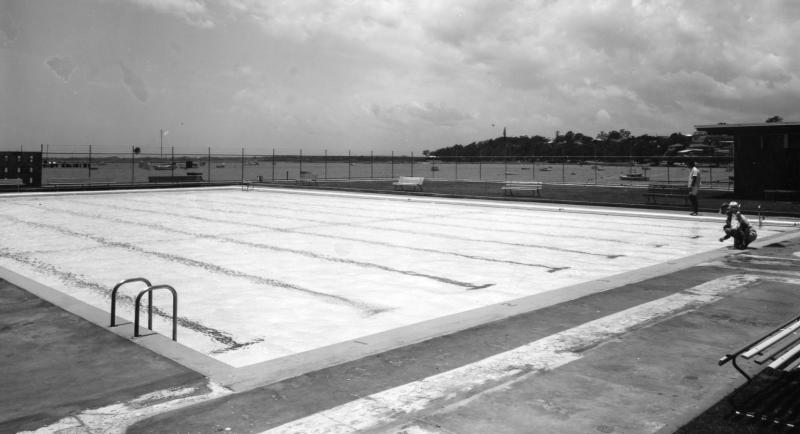
Unidentified photographer, 'Manly Swimming Pool and Amenities Block - Manly - 1964', 2 December 1964,
Brisbane City Council Library Services, Brisbane City Council.
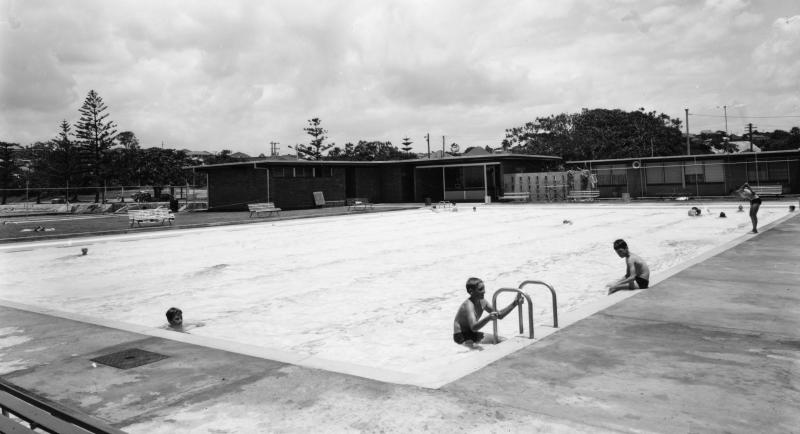
Unidentified photographer, 'Manly Swimming Pool and Amenities Block - Manly - 1964', 2 December 1964,
Brisbane City Council Library Services, Brisbane City Council.
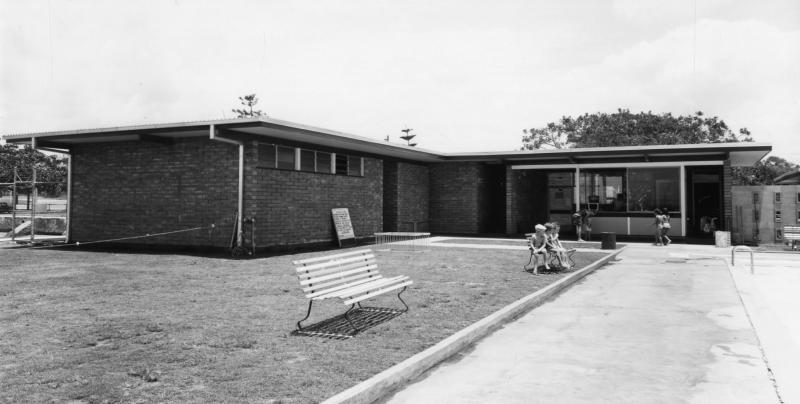
Unidentified photographer, 'Manly Swimming Pool and Amenities Block - Manly - 1964', 2 December 1964,
Brisbane City Council Library Services, Brisbane City Council.
References
-
Beitz, Mervyn N. (editor), Mangroves to Moorings, Manly Centenary Committee, Brisbane, 1982
-
BRISbites Suburban Sites http://www.brisbites.com/suburbView. asp, Wynnum, Wynnum North, Manly, Lota
-
Brisbane City Council Heritage Unit, Heritage Trail Wynnum Manly, Series No. 8, 4th edition
-
Ludlow, Peter, Moreton Bay People, Volume Two, Peter Ludlow, Brisbane, 1993
-
Nolan, Carolyn and Longhurst, Robert, Brisbane’s Moreton Bay, Our Heritage in Focus, State Library of Queensland Foundation, Brisbane, 1996
-
Brisbane City Council Water Supply and Sewerage Department Detail Plan no. 899 (from mid- 19302)
Citation prepared by — Brisbane City Council (page revised October 2022)
